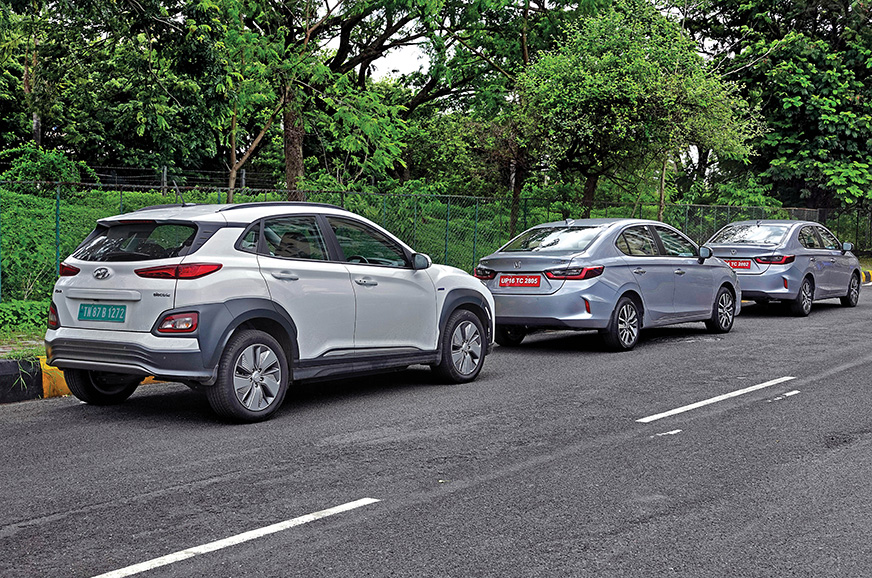
Range. It’s always on your mind; you have one eye on the battery’s state of charge (SOC) and you never want to wander too far from an electrical socket.
Range is the most crucial consideration factor for most EV drivers. That’s what I thought too. But after living for many months with the Kona EV (the last three in various degrees of lockdown), I’ve developed a rather blasé attitude towards something that had put the fear of God in me ever since I nearly ran out of charge in the original Reva over a decade ago. So have I been cured of range anxiety? You could say that because I am no longer gripped with panic even when the SOC meter drops to 10 percent. I know I’ll have enough juice for another 30km at least if I ‘hypermile’ in Eco mode, and that distance has been my outer limit on my daily drive for most of the time the Kona EV has been with me.
The furthest I’ve strayed from my wall plugs and the first time I left Mumbai city limits in the Kona was to meet the new Honda City in Vashi. The Kona doubled as a back-up car, but not before it got an overnight charge to fully top up the lithium-ion battery. That gave me an indicated range of 204km with the air con switched on and sufficient peace of mind for a full day out. The truth is, the EV was mainly parked at our shoot location (we spent most of the day shooting and driving the new City), but I had no hesitation zipping up and down Palm Beach road, in the hunt for a quiet spot to base ourselves. On that day, I covered a total of 86km and had a good 53 percent charge left, which equated to a balanced range of 124km. So as an extra-urban commuter, the Kona EV does the job.
What’s very handy is the amount of information the on-board computer throws up, especially the ‘consumption’ history of every trip, which can vary wildly, depending on your driving style and the mode you are in. Driving in ‘Eco’ with the regen set to level 3, I could eke out 7.8km for every kWh of the 39.2kWh battery, which translates to a range of over 300km. In contrast, a few ferocious stabs of the nicely sprung accelerator pedal, with the regen set to 0 and mode to ‘Sport’ had a debilitating effect on the battery. On empty roads, in the midst of Lockdown 4.0, the temptation to floor it and extract every kilowatt from the single permanent-magnet synchronous, 136hp electric motor was very high. The instant torque, and the burst of acceleration off the traffic lights that leaves everyone else standing is pretty addictive; and you really don’t care if that sends the range tumbling south. The worst figure I ever got was 4.2km/kWh, which equated to a sharply reduced range of under 170km, but more than enough to get me home.
There’s lots to like about the Kona, which, like most EVs, is easier to drive than anything with an internal combustion engine. It’s the linearity of every action, from the throttle response to the steering and brakes, that makes this car so natural and predictable to drive. The different levels of regeneration can be selected using the paddleshifters behind the wheel but what’s really cool is that they mimic gearshifts. Increasing or decreasing the levels of regen changes the level of resistance, and you feel like you’re going up or down a gear. It’s something I enjoyed playing with.
Gripes? The ride is a bit stiff-kneed due to the taut sidewalls of the low rolling resistance tyres. The grooves on the front ‘grille’ pick up a lot of dirt and are difficult to clean, and the black interiors, which hasn’t got much love and attention during the lockdown, isn’t looking fresh either.
The best bit? I must be the only guy who’s beaten the insane fuel price hikes; I haven’t visited a petrol pump in over three months!
Also see:
Hyundai Kona Electric long term review, first report
Hyundai Kona Electric vs MG ZS EV comparison











0 komentar:
Post a Comment